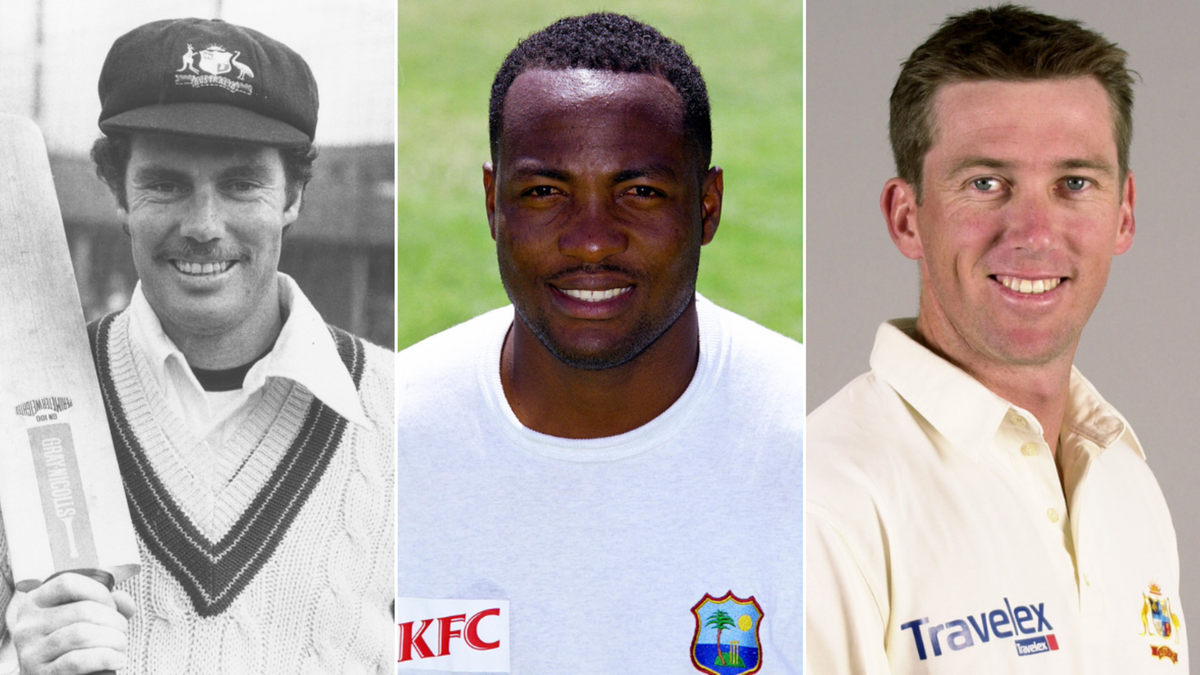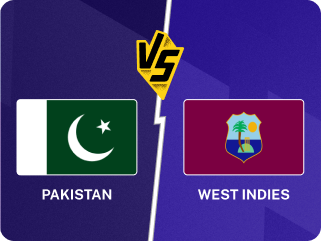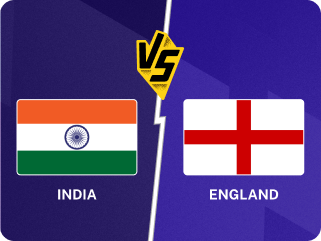
The Frank Worrell Trophy was commissioned during the West Indies’ 1960/61 tour of Australia. Here is an XI based the 101 Test matches played across the 24 series in quest of the trophy.
The Frank Worrell Trophy was an atypical contest for the long phases of dominance by one side or the other. Australia won the first edition, at home, but so did the West Indies, when they hosted it. Then Australia held the trophy thrice in a row, then the West Indies across eight consecutive series (across 17 years); and since 1994/95, Australia have not relinquished the trophy across an 11-trophy period. Since 1977/78, thus, it has changed hands only once.
This long period includes phases when both sides were depleted by Kerry Packer’s World Series. Since their famous chase in 2002/03, the West Indies have played Australia 17 times, drawing four and losing the rest. It has been an uneven contest. While selecting this XI, thus, we had to consider not merely the performances but also the quality of the opposition.
For example, Adam Voges’ average of 542 (not a typo) against the West Indies is the highest by anyone against a single opposition with a 500-run cut-off. Yet, Australia lost a mere 32 wickets across the four Test matches he batted in, and five West Indies bowlers averaged in excess of a hundred while bowling at least 36 overs.
Similarly, Doug Walters made 1,196 runs at 92, with six hundreds and five fifties in 14 innings. Yet, Douglas’ run fit into a pocket between 1966/67 and 1973, the era between two great generations of pace, when the West Indies played seven Test series and won none. It will not be fair to pit Walters or Voges with some great cricketers of other generations.
Bobby Simpson (captain)
15 Tests, 1,043 runs @ 40.11, HS: 201; 18 wickets @ 47.00; 29 catches
Do not go by the overall numbers. In the 1960s, Simpson played 10 Test matches, amassing 844 runs at 49.65. There was only one hundred (a double-hundred, though), but five other scores in excess of 70. Then, a decade after his retirement, Simpson was summoned to lead a third-string side when the cream of Australian cricket was playing for Kerry Packer. He was past 42 when his last series against the West Indies commenced.
The leg-breaks will make be a handy addition to this XI’s bowling attack, as will be his slip fielding (two catches a Test match!).
Conrad Hunte
10 Tests, 927 runs @ 48.78, HS: 110
Hunte’s first ten Test matches were the same as Simpson’s, and the returns were surprisingly similar. He had a run of 11 consecutive innings where he crossed 30 (including 75 or more five times). In the second series, he was the leading run-scorer from either side by some distance, helping West Indies win a series against Australia for the last time for 13 years.
Brian Lara
30 Tests, 2,815 runs @ 52.12, HS: 277; 34 catches
Not only is Lara the leading run-scorer in the history of a series (that too by a 544-run margin), but he got his runs in an era when Australia had a perennially strong bowling attack. While his personal fondness for his 277 at Sydney in 1992/93 is well-known, even that pales in comparison when pitted against his feats in 1998/99: not content with the 213 in Kingston or 153* in Bridgetown – both all-time great innings – he added another hundred at St John’s. It was fitting that he became the leading run-scorer in Test history during a Frank Worrell Trophy match.
Larry Gomes
13 Tests, 1,122 runs @ 56.10, HS: 127
Fans of later years have often wondered how Gomes, despite a sub-40 average, played 60 Test matches for one of the greatest sides of all time. Part of the answer to that question lies in his record against Australia. His numbers in the Frank Worrell Trophy are impressive by any standards, but on Australian soil, they shoot up to 844 runs at 70.33 – the highest by any West Indian by a considerable margin.
Gomes got six hundreds in 13 Tests against Australia. In the 47 other matches across his career, he got only three.
Greg Chappell
17 Tests, 1,400 runs @ 56, HS: 182*; 16 catches
Chappell came to his own in the 1975/76 home series, amassing 702 runs at 117 with three hundreds. He also had one reasonably impressive series on either side of it. Despite an ordinary outing in 1981/82 – the worst season of his career – he dominated the West Indians in a way few have.
Unfortunately, this also means that Viv Richards – whose eight series against Australia included one outstanding and two very good ones – misses out.
Gerry Alexander (wicketkeeper)
5 Tests, 484 runs @ 60.50, HS: 108; 16 catches
Only one series for Alexander – the first ever Frank Worrell Trophy – where he scored at least one half-century in each of the five Test matches, including two unbeaten fifties in one Tests and a hundred in another. Alexander’s record of six scores of fifty or more in a series by a wicketkeeper has been emulated, but not beaten.
Alan Davidson
4 Tests, 212 runs @ 30.28, HS: 80; 33 wickets @ 18.54, BBI: 6-53
Davidson’s only series was the same as Alexander’s – but what a series it was! In the famous tied Test in Brisbane, he became the first to do the 100-run-10-wicket double in a men’s Test match. But he took eight, eight, and six wickets in the next three matches as well, along with several cameos. He will be the lone left-hander of this incredible pace attack.
Malcolm Marshall
19 Tests, 440 runs @ 19.13, HS: 57; 87 wickets @ 22.51, BBI: 5-29
On the 1988/89 tour, Marshall took 17 wickets at 28.70, and struck every 68 balls – and that was the most ordinary of his four series. He connected two generations of fast bowlers that tormented the Australians (to be fair, everyone in the world), and will spearhead this attack as well. He also has three fifties.
Joel Garner
18 Tests, 89 wickets @ 20.89, BBI: 6-60
Like Marshall, Garner had an ordinary series as well – his last tour, in 1984/85. There, his 19 wickets cost him 29.78 apiece. The other 70 wickets came at an absurd 18.49. When he was not going for your throat, your toes would almost certainly be in danger.
Curtly Ambrose
27 Tests, 128 wickets @ 21.23, BBI: 7-25
About as tall as Garner, Ambrose was perhaps just as lethal as well, and even inherited the ‘sequel nickname’ of Little Bird, after Big Bird Garner. His most famous spell, 7-1, was in Perth in 1992/93 – a tour where he took 33 wickets at 16.42. Australia clinched the Frank Worrell Trophy in the following series, but Ambrose emerged tall on either side of a near-fight with Steve Waugh.
Glenn McGrath
23 Tests, 110 wickets @ 19.38, BBI: 6-17
The slowest man of the attack, but perhaps just as devastating, McGrath actually had an ordinary outing in 2002/03, when he joined the team late in the series after his wife was ill. His forgettable series was marred by a volley of abuses with Ramnaresh Sarwan, but in his other five series, McGrath’s average drops below 19, and strike rate below 47.
Protocol perhaps demands the inclusion of at least one spinner in the XI, but when has spin played a significant role in the Frank Worrell Trophy? It is more prudent to go in with a five-pronged pace attack. Whether you play in Perth of the yesteryear or Brisbane of today or Bridgetown or Kingston of any era, they will ensure the batters never have any respite.
This is a pace attack so devastating that Andy Roberts, Michael Holding, Dennis Lillee, Jason Gillespie, Craig McDermott, and Courtney Walsh all sit out. Even the pace of Jeff Thomson or Brett Lee feel redundant.
But… what if they need a spinner for some reason?
Shane Warne
19 Tests, 384 runs @ 13.71; HS: 47; 65 wickets @ 29.95, BBI: 7-52
In case the pitch offers turn (there is no reason to, but just in case), the options were surprisingly few. In fact, it is a two-way race. Lance Gibbs took 103 wickets in 24 Test matches, but he struck once every 91 balls – a count nowhere close to Warne’s 63. Warne’s numbers look even better when one removes the 1998/99 series, when he managed two wickets in three Test matches against a rampant Lara.








